Grass weeds have become a common sight in too many of our tillage fields. Increased minimum tillage, a dry autumn, higher winter barley area, a mild winter and a late flush of weeds this spring all contributed to the increase in grass weeds this year.
Grass weed control was the focus of a recent Enable Conservation Tillage (ECT) farm walk held on the farm of Brian and Eoin Lyons in Ballyragget, Co Kilkenny. ECT is a Teagasc-led European Innovation Partnership project which involves industry and farmer groups.
The ECT project established a network of 10 focus farms around the country, all of which have grass weed problems.
Over the next five years, the project aims to demonstrate effective weed control on these farms when moving to a min-till, strip-till or no-till system.
The key target weeds are wild oats, bromes, canary grass and blackgrass, all of which are increasingly prominent.
A farm in transition
The Lyons farm, one the ECT project’s focus farms, is in transition from a plough-based to a no-till system. The entire 150ac tillage farm was ploughed up until 2017 and was in continuous cereals up to 2015.
The decision to move to no-till was based on the need to improve soil health, reduce establishment cost and to reduce labour requirement and inputs.
They made a number of changes to their farm business to facilitate the move to no-till. The most obvious was investing in a John Deere 750A direct drill. They introduced break crops into the rotation in 2015 and aim to have 25% of the farm in break crops annually. They generally start direct-drilling after a cover crop and they are aiming for full conversion by 2021.
However, effective weed control can be one of the main stumbling blocks when moving away from a plough-based system, as the plough can help manage seed populations in soil. This was one of the main reasons for the ECT programme, explains project adviser Jimmy Staples.
Jimmy emphasised the importance of understanding how management actions over the years have helped to drive grass weed pressure. This is vital knowledge when developing a new control strategy.
Before this can be done, however, it is essential to be able to correctly identify weeds. Correct identification is crucial, as once you know what you are dealing with you can then learn about its strengths and weaknesses.
Grasses have a number of key identifiers. These include the seed head, ligule, auricle, leaf sheath and the presence of stolons or rhizomes. These are your guides to weed identification.
Lesser canary grass
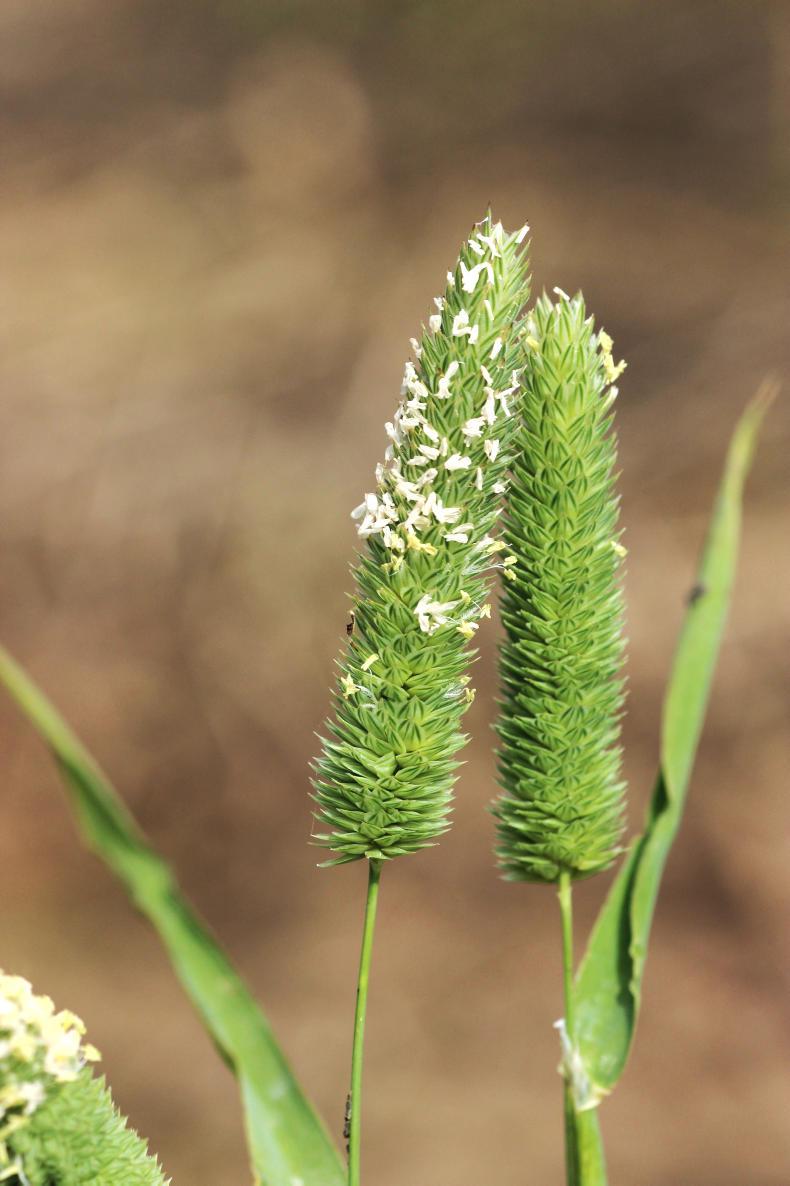
Lesser canary grass is commonly found in the south but now making its way further north. It is primarily spring germinating but can also germinate in autumn. There are no confirmed cases of resistance (yet) but it is advisable to use full herbicides rates. A giveaway identifier for this weed is the red exudate that comes from damaged tissue.
The main key identification features are:
Young: the hairless leaf blade is flat, narrow and long with parallel veins tapering to a fine point. The parallel veins and can be smooth or rough to the touch.Mature: the stem is erect or bent at the nodes and from 10cm to 100cm tall. The nodes are solid, smooth and hairless. The leaves are green in colour and the plant has a prominent ligule between 8mm and 10mm long, with no auricles. The flower head is a densely packed spike (ear), which is slightly oval to oblong or cylindrical and is pale green in colour. Wild oats

A wild oat plant is distinctive, tall (30cm to 150cm), strong, stout grass with hollow stems. Wild oats only reproduce from seeds, which are darker in colour and hairy compared to conventional oat seeds. Seeds can germinate from depth which can make them a challenge to control. One plant/m2 equates to a 1% yield loss. And there are now confirmed cases of herbicide resistance.
Around 90% of wild oats are spring types. Spring wild oats tend to have awns on every seed and the seeds tend to shed separately. Not all seeds on winter wild oats contain awns and they shed as a unit.
Young: the seedling plant has an anti-clockwise twist which is particularly apparent at leaves two to three. The leaves are sometimes rough to touch, are rolled in the sheath and are slightly hairy.Mature: a mature wild oat has tall, upright stems and towers over cereals. It has a large, flat, rough leaf. Leaves have a distinctive anti-clockwise twist and the ligule is long, up to 6mm, but has no auricles. The plant has a large spreading panicle of drooping pale green spikelets.Sterile brome
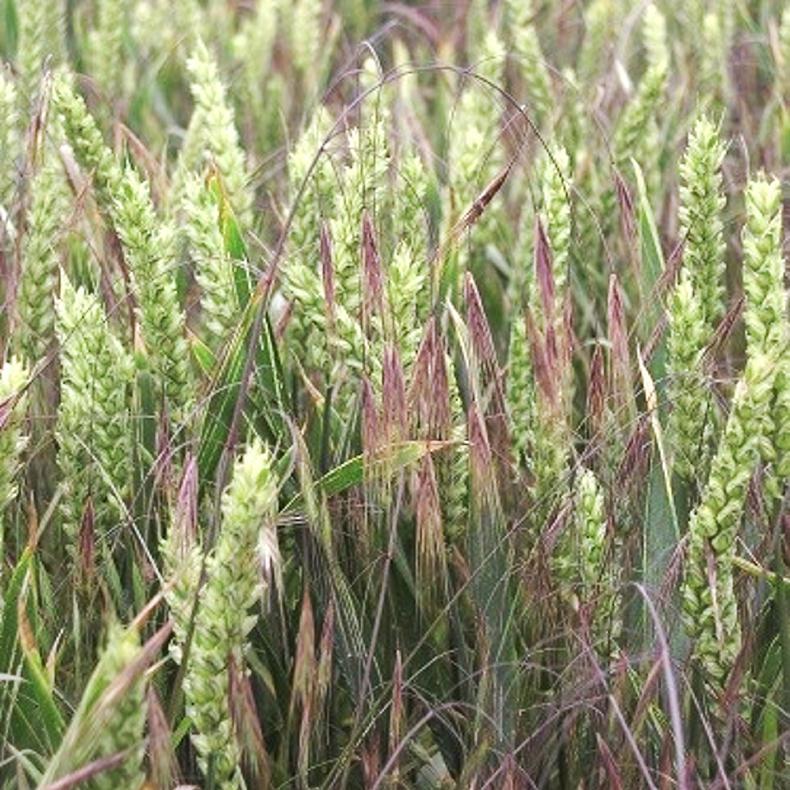
There are five different species of brome found in Irish tillage fields – great, meadow, rye, soft and sterile brome. While there have been reports of all of these species making an appearance this year, sterile brome is still our main weed.
Sterile (barren) brome is a native annual grass that can grow to 50cm to 100cm. The weed is commonly found along hedgerows and ditches and moves into tillage fields from headland infestations.
Just one of these highly competitive plants can produce over 200 seeds. Five plants/m2 can lead to a direct 5% yield loss. There is now suspected herbicide resistance in this autumn germinating plant.
Young: the first visible seedling leaf is purple-tinged, with the tillers turning a pale green colour and limp. The leaf blade is hairy and there are no auricles present and the ligule is of medium length.Mature: the flower head is distinguished by its long awns and loose floppy panicles, which have a purple tinge. The spikelets are loosely scattered, drooping and contain 4-10 seeds. Green leaf blades turn purple as they mature. The lower leaf sheaths have very distinctive pyjama stripes. Blackgrass

Blackgrass is a potentially devastating annual grass weed that can grow to 80cm to 90cm. Blackgrass is one of the most significant cereal weeds due to its ability to spread, its ability to develop resistance to herbicides and its ability to continuously evolve.
One plant every square metre in one hectare can produce six million viable seeds. These seeds are mainly shed before the crop is harvested. About 80% will germinate in winter and these tiller in early spring.
However, up to 70% of the shed seeds will be lost each year as they cannot emerge from depth.
Young plant: young leaves are fine and smooth, with a shiny upper surface. The leaf blade is twisted, with a blunt tip. The stem may be reddish in colour and there are no auricles.Mature plant: the flower head is distinctive and resembles a rat’s tail. The narrow, cylindrical heads can be up to 13cm long and range in colour from green to deep purple. The leaves themselves are generally dark green, long and slender with a shiny upper surface. Blackgrass on the rise
Jimmy Staples explained that there has been an increase in the reporting of blackgrass this year. However, there is a high likelihood that these are not new cases.
“This weed didn’t just get here overnight. It’s been floating around for a number of years,” he said.
We now know of established pockets of the weed around the country in parts of Louth, Meath and Dublin, as well as Kinsale, Co Cork, and Clonmel, Co Tipperary.
Jimmy warned that spread of the weed from those areas is likely. Blackgrass is well-suited to the Irish climate. While herbicide resistance is common in blackgrass in the UK, we know little of its current status in Ireland.
With 98% of UK blackgrass populations showing resistance to at least one herbicide active ingredient, the fear is that these populations are also now in Ireland.
The plant has developed both target site and non-target site resistance to selective herbicide groups. And reduced sensitivity to glyphosate was found recently.
The weed is ferocious and will punish growers for showing any leniency. Just eight to 12 plants/m2 can lead to a yield reduction of between 2% and 5%. If allowed to multiply, an infected field will not be suitable for tillage for three to five years.Integrated control
Growers need to use a range of measures to help control these weeds, including physical, biological and chemical means. Options include hand-rouging, stale seed-beds, seeding rate, variety selection, machine hygiene, cover crops, rotation, and alternative herbicide programmes.
The key is not to rely on a single measure and to use measures that complement each other. To achieve this it is essential to know about your target weed(s) and target its weaknesses.
Stubble cultivation is a very useful tool but different weeds require different strategies. For example, for blackgrass shallow cultivation (less than 5cm) will help get seed germination. This will also help with sterile and great brome, as well as volunteer cereals.
Meadow, soft and rye brome on the other hand should be left on the surface to ripen for a month before cultivating. But wild oat seeds should be left on the surface for as long as possible into the autumn.
Survey
As part of the project, Teagasc is trying to determine the level and spread of herbicide resistance in Ireland’s key grass weeds.
If you suspect any level of resistance to herbicides in grass weeds, especially in bromes, blackgrass, canary grass or wild oats, Teagasc want samples from such fields for testing.
Collect two cupfuls of ripe seed following a “W” shape in the field. Put the seed in a paper envelope and leave it to dry for a couple of days.
Then include your name, address and field details with the sample and drop it in to your local Teagasc office or send it to Jimmy Stables, Teagasc, Oak Park, Carlow.
Email Jimmy.staples@teagasc.ie for details.
Read more
Listen: Blackgrass is here and it's on the rise
Blackgrass expanding at an alarming rate
Grass weeds have become a common sight in too many of our tillage fields. Increased minimum tillage, a dry autumn, higher winter barley area, a mild winter and a late flush of weeds this spring all contributed to the increase in grass weeds this year.
Grass weed control was the focus of a recent Enable Conservation Tillage (ECT) farm walk held on the farm of Brian and Eoin Lyons in Ballyragget, Co Kilkenny. ECT is a Teagasc-led European Innovation Partnership project which involves industry and farmer groups.
The ECT project established a network of 10 focus farms around the country, all of which have grass weed problems.
Over the next five years, the project aims to demonstrate effective weed control on these farms when moving to a min-till, strip-till or no-till system.
The key target weeds are wild oats, bromes, canary grass and blackgrass, all of which are increasingly prominent.
A farm in transition
The Lyons farm, one the ECT project’s focus farms, is in transition from a plough-based to a no-till system. The entire 150ac tillage farm was ploughed up until 2017 and was in continuous cereals up to 2015.
The decision to move to no-till was based on the need to improve soil health, reduce establishment cost and to reduce labour requirement and inputs.
They made a number of changes to their farm business to facilitate the move to no-till. The most obvious was investing in a John Deere 750A direct drill. They introduced break crops into the rotation in 2015 and aim to have 25% of the farm in break crops annually. They generally start direct-drilling after a cover crop and they are aiming for full conversion by 2021.
However, effective weed control can be one of the main stumbling blocks when moving away from a plough-based system, as the plough can help manage seed populations in soil. This was one of the main reasons for the ECT programme, explains project adviser Jimmy Staples.
Jimmy emphasised the importance of understanding how management actions over the years have helped to drive grass weed pressure. This is vital knowledge when developing a new control strategy.
Before this can be done, however, it is essential to be able to correctly identify weeds. Correct identification is crucial, as once you know what you are dealing with you can then learn about its strengths and weaknesses.
Grasses have a number of key identifiers. These include the seed head, ligule, auricle, leaf sheath and the presence of stolons or rhizomes. These are your guides to weed identification.
Lesser canary grass

Lesser canary grass is commonly found in the south but now making its way further north. It is primarily spring germinating but can also germinate in autumn. There are no confirmed cases of resistance (yet) but it is advisable to use full herbicides rates. A giveaway identifier for this weed is the red exudate that comes from damaged tissue.
The main key identification features are:
Young: the hairless leaf blade is flat, narrow and long with parallel veins tapering to a fine point. The parallel veins and can be smooth or rough to the touch.Mature: the stem is erect or bent at the nodes and from 10cm to 100cm tall. The nodes are solid, smooth and hairless. The leaves are green in colour and the plant has a prominent ligule between 8mm and 10mm long, with no auricles. The flower head is a densely packed spike (ear), which is slightly oval to oblong or cylindrical and is pale green in colour. Wild oats

A wild oat plant is distinctive, tall (30cm to 150cm), strong, stout grass with hollow stems. Wild oats only reproduce from seeds, which are darker in colour and hairy compared to conventional oat seeds. Seeds can germinate from depth which can make them a challenge to control. One plant/m2 equates to a 1% yield loss. And there are now confirmed cases of herbicide resistance.
Around 90% of wild oats are spring types. Spring wild oats tend to have awns on every seed and the seeds tend to shed separately. Not all seeds on winter wild oats contain awns and they shed as a unit.
Young: the seedling plant has an anti-clockwise twist which is particularly apparent at leaves two to three. The leaves are sometimes rough to touch, are rolled in the sheath and are slightly hairy.Mature: a mature wild oat has tall, upright stems and towers over cereals. It has a large, flat, rough leaf. Leaves have a distinctive anti-clockwise twist and the ligule is long, up to 6mm, but has no auricles. The plant has a large spreading panicle of drooping pale green spikelets.Sterile brome

There are five different species of brome found in Irish tillage fields – great, meadow, rye, soft and sterile brome. While there have been reports of all of these species making an appearance this year, sterile brome is still our main weed.
Sterile (barren) brome is a native annual grass that can grow to 50cm to 100cm. The weed is commonly found along hedgerows and ditches and moves into tillage fields from headland infestations.
Just one of these highly competitive plants can produce over 200 seeds. Five plants/m2 can lead to a direct 5% yield loss. There is now suspected herbicide resistance in this autumn germinating plant.
Young: the first visible seedling leaf is purple-tinged, with the tillers turning a pale green colour and limp. The leaf blade is hairy and there are no auricles present and the ligule is of medium length.Mature: the flower head is distinguished by its long awns and loose floppy panicles, which have a purple tinge. The spikelets are loosely scattered, drooping and contain 4-10 seeds. Green leaf blades turn purple as they mature. The lower leaf sheaths have very distinctive pyjama stripes. Blackgrass

Blackgrass is a potentially devastating annual grass weed that can grow to 80cm to 90cm. Blackgrass is one of the most significant cereal weeds due to its ability to spread, its ability to develop resistance to herbicides and its ability to continuously evolve.
One plant every square metre in one hectare can produce six million viable seeds. These seeds are mainly shed before the crop is harvested. About 80% will germinate in winter and these tiller in early spring.
However, up to 70% of the shed seeds will be lost each year as they cannot emerge from depth.
Young plant: young leaves are fine and smooth, with a shiny upper surface. The leaf blade is twisted, with a blunt tip. The stem may be reddish in colour and there are no auricles.Mature plant: the flower head is distinctive and resembles a rat’s tail. The narrow, cylindrical heads can be up to 13cm long and range in colour from green to deep purple. The leaves themselves are generally dark green, long and slender with a shiny upper surface. Blackgrass on the rise
Jimmy Staples explained that there has been an increase in the reporting of blackgrass this year. However, there is a high likelihood that these are not new cases.
“This weed didn’t just get here overnight. It’s been floating around for a number of years,” he said.
We now know of established pockets of the weed around the country in parts of Louth, Meath and Dublin, as well as Kinsale, Co Cork, and Clonmel, Co Tipperary.
Jimmy warned that spread of the weed from those areas is likely. Blackgrass is well-suited to the Irish climate. While herbicide resistance is common in blackgrass in the UK, we know little of its current status in Ireland.
With 98% of UK blackgrass populations showing resistance to at least one herbicide active ingredient, the fear is that these populations are also now in Ireland.
The plant has developed both target site and non-target site resistance to selective herbicide groups. And reduced sensitivity to glyphosate was found recently.
The weed is ferocious and will punish growers for showing any leniency. Just eight to 12 plants/m2 can lead to a yield reduction of between 2% and 5%. If allowed to multiply, an infected field will not be suitable for tillage for three to five years.Integrated control
Growers need to use a range of measures to help control these weeds, including physical, biological and chemical means. Options include hand-rouging, stale seed-beds, seeding rate, variety selection, machine hygiene, cover crops, rotation, and alternative herbicide programmes.
The key is not to rely on a single measure and to use measures that complement each other. To achieve this it is essential to know about your target weed(s) and target its weaknesses.
Stubble cultivation is a very useful tool but different weeds require different strategies. For example, for blackgrass shallow cultivation (less than 5cm) will help get seed germination. This will also help with sterile and great brome, as well as volunteer cereals.
Meadow, soft and rye brome on the other hand should be left on the surface to ripen for a month before cultivating. But wild oat seeds should be left on the surface for as long as possible into the autumn.
Survey
As part of the project, Teagasc is trying to determine the level and spread of herbicide resistance in Ireland’s key grass weeds.
If you suspect any level of resistance to herbicides in grass weeds, especially in bromes, blackgrass, canary grass or wild oats, Teagasc want samples from such fields for testing.
Collect two cupfuls of ripe seed following a “W” shape in the field. Put the seed in a paper envelope and leave it to dry for a couple of days.
Then include your name, address and field details with the sample and drop it in to your local Teagasc office or send it to Jimmy Stables, Teagasc, Oak Park, Carlow.
Email Jimmy.staples@teagasc.ie for details.
Read more
Listen: Blackgrass is here and it's on the rise
Blackgrass expanding at an alarming rate








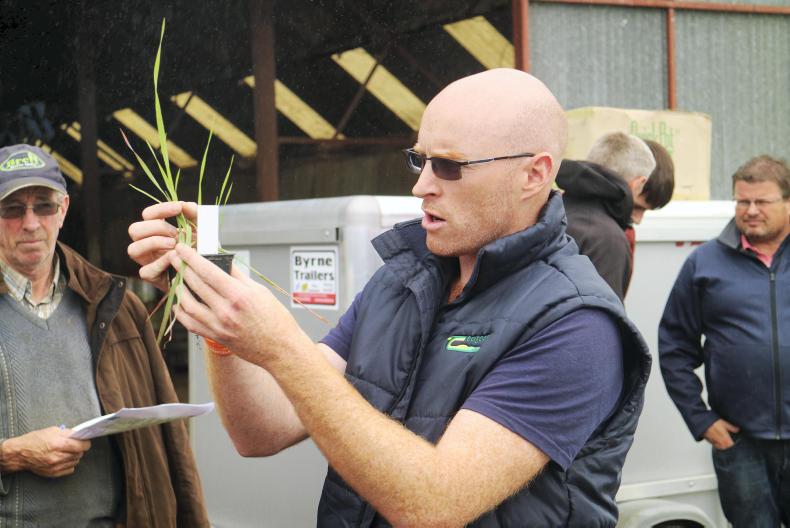
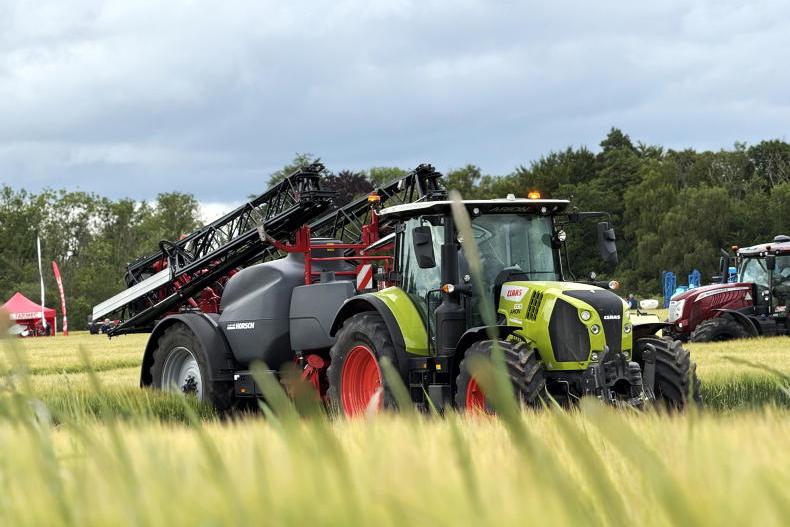

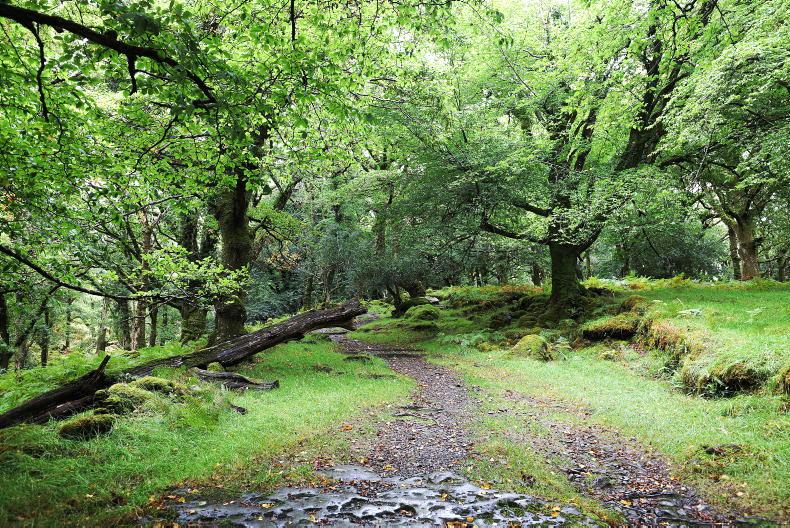
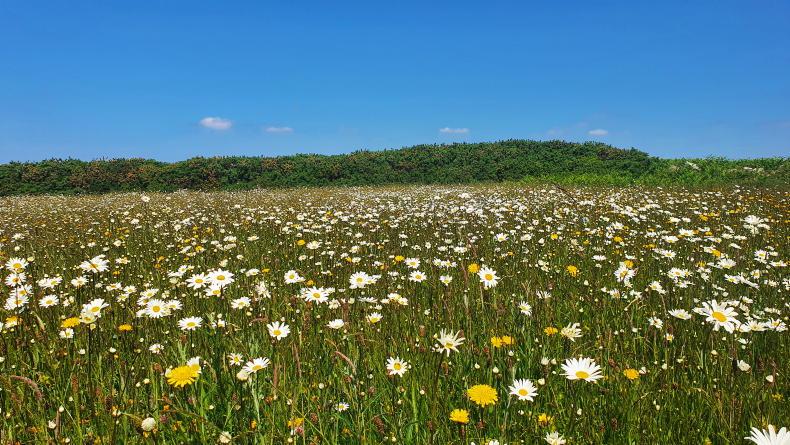
SHARING OPTIONS